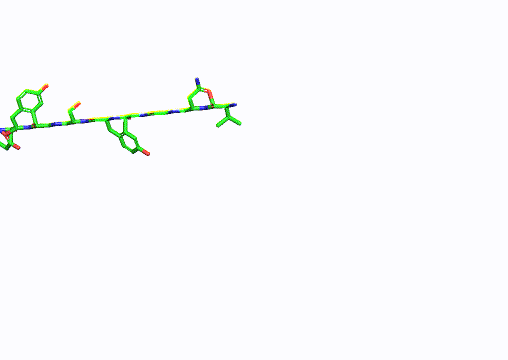PyRosetta.notebooks

Jupyter Notebooks for learning the PyRosetta platform for biomolecular structure prediction and design
View the Project on GitHub RosettaCommons/PyRosetta.notebooks
PyRosetta Workshops
Welcome to PyRosetta!
PyRosetta is an interactive Python-based interface to the powerful Rosetta molecular modeling suite. It enables users to design their own custom molecular modeling algorithms using Rosetta sampling methods and energy functions.
The Jupyter Notebooks below provide an introduction to the fundmamental principles and tools for using PyRosetta. The Notebooks can be viewed directly in nbviewer. To execute any of the notebooks either locally or in Google Colaboratory, please see Chapter 1 for setup instructions.
Many of the workshops have been adapted from the book The PyRosetta Interactive Platform for Protein Structure Prediction and Design: PyRosetta4 Update by Jeffrey Gray, Sidhartha Chaudhury, Sergey Lyskov, and Jason Labonte (Amazon). Other Rosetta developers have also lent their various areas of expertise to help create workshops for this series. Additional contributions to our open-source repository are always welcomed. To learn more about this project, check out our preprint.
Table of Contents
Keyword Index
Chapter 1.0 How to Get Started
- 1.1 How to Get PyRosetta on Your Personal Computer
- 1.2 Jupyter Notebooks, Python, and Google Colaboratory
- 1.3 Frequently Asked Questions/Troubleshooting Tips
Chapter 2.0 Introduction to PyRosetta
- 2.1 Pose Basics
- 2.2 Working with Pose residues
- 2.3 Accessing PyRosetta Documentation
- 2.4 Getting spatial features from a Pose
- 2.5 Protein Geometry
- 2.6 Visualization with the
PyMOLMover - 2.7 Visualization with the
PyMOLMover, PyRosetta ColabPyMOL integration - 2.8 RosettaScripts in PyRosetta
- 2.9 Visualization and
pyrosetta.distributed.viewer
Chapter 3.0 Rosetta Energy Score Functions
- 3.1 Score Function Basics
- 3.2 Practice: Analyzing energy between residues
- 3.3 Energies and the PyMOL Mover
Chapter 4.0 Introduction to Folding
Chapter 5.0 Structure Refinement
Chapter 6.0 Packing & Design
- 6.1 Side Chain Conformations and Dunbrack Energies
- 6.2 Packing and Relax
- 6.3 Protein Design with a Resfile and FastRelax
- 6.4 Protein Design 2
- 6.5 HBNet Before Design
- 6.6 De Novo Parametric Backbone Design
- 6.7 De Novo Protein Design with PyRosetta
- 6.8 Point Mutation Scan
Chapter 7.0 Docking
Chapter 8.0 Ligand Refinement in PyRosetta (a.k.a. High-Resolution Local Docking) Using the ligand.wts Scorefunction
- 8.1 Global Ligand Docking using
XMLObjectsUsing theref2015.wtsScorefunction - 8.2
GALigandDockProtocol withpyrosetta.distributedUsing thebeta_cart.wtsScorefunction
Chapter 9.0 Loop Modeling
Chapter 10.0 Working With Symmetry
Chapter 11.0 Working With Density
Chapter 12.0 Working With Antibodies
Chapter 13.0 RosettaCarbohydrates
- 13.1 RosettaCarbohydrates: Trees, Selectors and Movers
- 13.2 RosettaCarbohydrates: Modeling and Design
Chapter 14.0 RNA in PyRosetta
Chapter 15.0 Modeling Membrane Proteins
Chapter 16.0 Running Rosetta in Parallel
- 16.1 Distributed analysis example: exhaustive ddG PSSM
- 16.2 Distributed computation example: miniprotein design
- 16.3 Example of Using PyRosetta with GNU Parallel
- 16.4 Examples Using the
daskModule - 16.5 Part I: Parallelized Global Ligand Docking with
pyrosetta.distributed - 16.6 PyRosettaCluster Tutorial 1A. Simple protocol
- 16.7 PyRosettaCluster Tutorial 1B. Reproduce simple protocol
- 16.8 PyRosettaCluster Tutorial 2. Multiple protocols
- 16.9 PyRosettaCluster Tutorial 3. Multiple decoys
- 16.10 PyRosettaCluster Tutorial 4. Ligand params